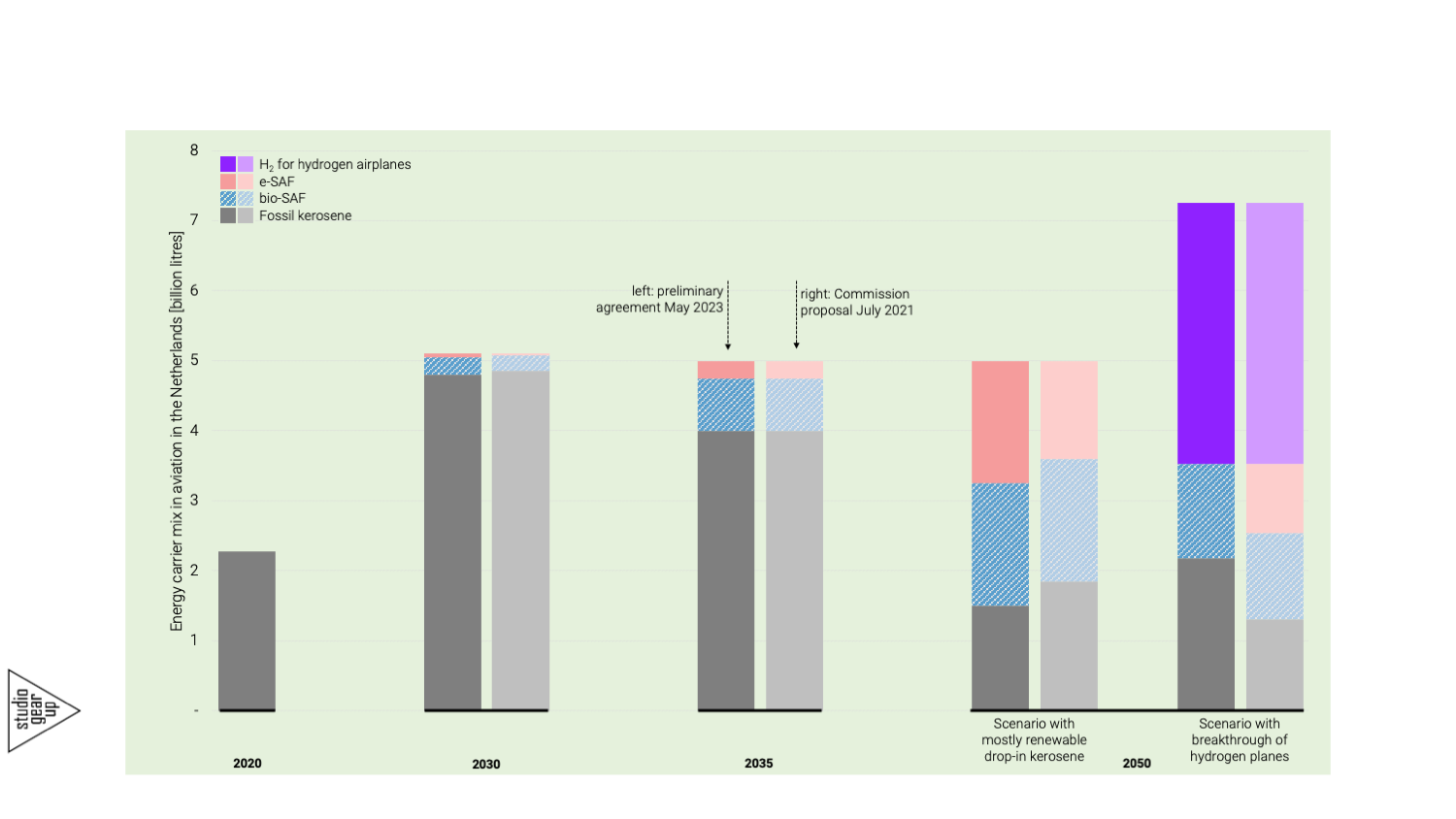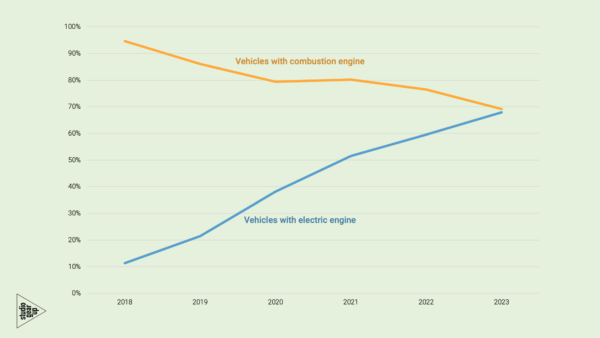The unintended impacts of the inclusion of hydrogen to contribute to the SAF-mandates in the ReFuelEU Aviation preliminary agreement of May 2023
On May 2, 2023, the European Council, Commission and Parliament reached a preliminary agreement on making the aviation sector in Europe more sustainable. This agreement, called ReFuelEU Aviation, describes how the aviation sector will have to reduce its emissions in the coming years using renewable fuels. This preliminary agreement deviates at some points to the July 2021 proposal of the European Commission for this Regulation.
studio Gear Up carried out, at own initiative, an analysis of possible consequences of the changes in the preliminary agreement. For this analysis we build on a project we earlier executed for the Dutch Ministry of Infrastructure and Water Management. In that analysis we investigated what the 2021 Commission proposal for ReFuelEU Aviation would mean for the future demand for hydrogen in the Netherlands. Based on the previous project, studio Gear Up has adjusted its calculations and analysed and updated the consequences based on the new preliminary agreement. This article covers the most important changes. While this analysis evaluates the consequences for the Netherlands situation, the outcomes can be extrapolated to and have relevance at an EU-level.
Based on the analysis of the consequences of the preliminary agreement of ReFuelEU Aviation we conclude that:
- the ambitions for the share of sustainable aviation fuels have increased
- the inclusion of hydrogen as eligible fuel for the SAF-mandates, in combination with the volumetric basis for achieving the mandates may result in unintended higher levels of fossil fuel deployment in 2050, in a scenario where a breakthrough of direct hydrogen fuelled hydrogen-aircrafts takes place.
For that reason, we recommend European policy makers and negotiators to base the mandates on the energy content of fuels instead on the volume of fuels. In case it is decided to maintain the volume of fuels as a basis for the mandates, we would advise to exclude hydrogen from the definition of SAF.
The analysis is executed on basis of the following information from documents about the preliminary agreement, that have been shared among European stakeholders. These documents are not yet official and published. The main issues that we considered in this analysis are:
- The mandates have been increased in comparison to the Commission’s proposal (see Table).
- Hydrogen is now defined as an eligible fuel for the fulfilment of the mandate of SAF.
- the mandate remains based on volumetric targets.

What are the implications of the combination of these choices?
Apart from the higher blending percentages than the initial proposal, the biggest change is the inclusion of hydrogen in the category of fuels classified as sustainable aviation fuels (also known as SAF). Because hydrogen has a relatively small energy density compared to biofuels and e-kerosene, there is a threat that the remaining energy needs will be supplemented by fossil kerosene. This is the case in a situation where direct hydrogen fueled hydrogen aircrafts will see a breakthrough.
An important reason for this, as we assume, unintended effect of more fossil use, is that the mandatory share of renewable fuel for the aviation sector (the blending mandate) in the preliminary agreement, like the Commission’s proposal is determined on a volume basis. A given volume of hydrogen contains less energy than that same volume of biofuel or e-kerosene. It seems like this difference in energy density is currently not accounted for in the renewable fuel mandates. If the preliminary agreement would materialise with these elements, the aviation sector could meet the blending mandates in 2050 on a volume basis, but still rely heavily on fossil kerosene on an energy basis. This would negatively affect the achievement of the EU’s climate goals for 2050.
The above applies only in a scenario in which aviation makes a breakthrough in hydrogen-powered aircraft, thereby reducing its use of renewable drop-in kerosene (bio-SAF and e-SAF). This scenario also creates a lower need for hydrogen in 2050 than was calculated in our previous analysis. This is because the production of e-SAF consumes relatively large amounts of hydrogen. See diagram.

In the scenario where hydrogen aircrafts are negligible in number, and renewable drop-in kerosene is the largest energy carrier, a 23% higher hydrogen demand arises in 2050 compared to our previous calculations (see diagram). This is a direct result of the increase in the minimum share of renewable fuels in the preliminary agreement. Unlike the hydrogen aircraft breakthrough scenario, this would mean reduced demand for fossil kerosene compared to the previous proposal.
The ultimate hydrogen demand for the aviation sector will depend on technological advances in hydrogen aircraft. And although the preliminary agreement mandates higher blending percentages than the initial proposal, this will not necessarily lead to a reduced consumption of fossil kerosene in case of a breakthrough of hydrogen aircrafts.
For more information read the analysis (in Dutch) here.
More information on the December 2020 project for the Dutch Ministry of Infrastructure and Water Management is found here.

